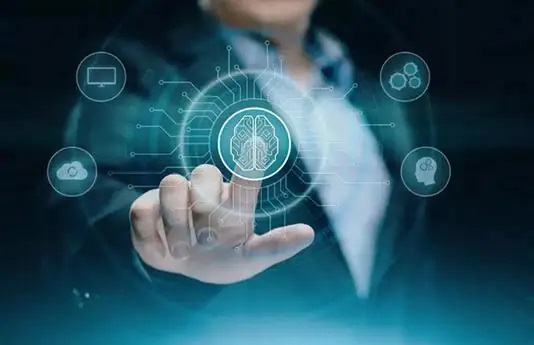Some two years ago, Louis Vuitton, a well-known brand in luxury fashion, found an innovative way to engage with young customers. In August 2021 it launched Louis the Game, an online game in which players had to guide “Vivienne,” a digital character, as she went on a journey to search for 200 collectible NFT candles to celebrate LV’s 200th Birthday. Each candle unlocked stories about Louis Vuitton, according to a report in Retail Info Systems. According to the RIS report, “The luxury fashion retailer created the game with attracting younger markets in mind and is now expanding the game with more levels and NFT raffles as downloads hit more than 2 million. The company reported higher than expected sales due to its active marketing efforts tapping into pent-up demand for goods.”
Louis Vuitton is hardly alone. Even though the speculative frenzy that surrounded NFTs, crypto currency, and other technologies in the past have faded today, innovative companies are finding ways to deploy tools such as NFTs to engage deeply with customers in profitable ways.
In addition to Louis Vuitton, several brands, in both premium and mass market retail, have ventured into this arena. Among them are:
- Starbucks: Starbucks launched an NFT community called Odyssey in July The community is designed to bring together Starbucks fans and give them access to exclusive content, experiences, and rewards. Members of the community can earn points by participating in activities, such as buying coffee, redeeming rewards, and attending events. These points can then be used to purchase NFTs, which can be redeemed for physical merchandise, digital content, or even experiences like coffee tastings or barista training.
- Adidas launched an NFT collection called Into the Metaverse in December 2021. The collection features 3D avatars of Adidas sneakers, which can be used in virtual worlds like Decentraland and The Sandbox. Adidas also partnered with three popular NFT projects, Bored Ape Yacht Club, PUNKS Comic, and gmoney, to create unique sneakers for the collection. The collection was a huge success, selling out in minutes and generating more than $23 million in sales.
- Coca-Cola launched a series of NFTs in February 2022 to celebrate its 100th anniversary. The collection features 13 limited-edition NFTs, each inspired by a different decade of Coca-Cola’s history. The NFTs were auctioned off on OpenSea, with proceeds going to the Special Olympics.
- Tiffany & Co offered 250 “NFTiffs” for purchase to CryptoPunks holders, who will be able to redeem a digital pass and have a custom pendant created as well as an NFT of the design in 2022. Each pendant costs 30 ETH (£40,600) and will have at least 30 stones, including gemstones and possibly diamonds in some cases.
- Prada launched an NFT collection called Time Capsule in February 2022. The collection features a limited-edition digital artwork that changes over time. The artwork is stored on the blockchain, and each time it changes, the owner receives a new NFT. The collection was a success, selling out in minutes and generating more than $3 million in sales.
- NBA Top Shot is a digital collectible platform that allows fans to buy, sell, and trade NBA highlight moments as NFTs. The platform has been a huge success, with more than $1 billion in sales since its launch in 2020.
- Visa launched a program called Visa Creator Program in March 2022 to support NFT artists and creators. The program provides artists with grants, mentorship, and access to Visa’s network. Visa has also partnered with several NFT marketplaces, such as OpenSea and Rarible, to make it easier for people to buy and sell NFTs.
The above examples are just a few examples of how brands are using NFTs to create unique digital assets for merchandise, offer VIP access to exclusive experiences, and build brand loyalty. Issuing NFTs and forming a community are only the beginning. As the NFT market continues to grow, we can expect to see even more brands adopt NFT and Web3 related technologies and explore innovative ways to engage customers.
As the first promising application of Web3 technology, NFTs enable brands to bypass centralized platforms such as Facebook and YouTube and reclaim the ownership of their relationship with customers. After building the community with direct access, how can brands continuously incentivize community members to engage and participate in community building and value creation? That is the next frontier for brands to explore.
The community connected by NFTs can be further transformed into a play-to-earn blockchain game that hands out rewards (NFTs or tokens) to users in return for playing, contributing content, posting on social media, or even just walking around. With careful design of the gamification system, coupled with a carefully managed reward system, brands could to create an endless immersive experience for customers to enjoy. As the RIS report notes: “From being solely a collectible, NFTs can also become a tool to play games with or be an in-game drop or reward. Gamifying NFTs offers experiences to customers that would attract them into buying, thus enhancing retail sales.”
Tokenomics and Gamification: Two Key Pillars for Community Building
NFTs bring democratization to the community. For a decentralized brand community to function properly, it needs a mechanism to direct the activities of community members to the right course and to incentivize the necessary behaviors to maintain the network and its value. The success of an NFT project depends on community and confidence building.
Play-to-earn (P2E) is a blockchain game that is fundamentally different from long existing pay-to-play (P2P) web2 games, both in terms of their technology and profit model. The P2E model combines game experience with a financial system where users get rewards for engaging in certain actions. Unlike Web2 games that profit from game subscription and advertising, P2E blockchain games typically earn profit from charging commissions from exchange of digital assets among players. Thus, the success of the P2E NFT game depends on community and confidence building. It requires careful design and management of gamification and tokenomics, two intertwined pillars, to unleash more the powerful potential of an NFT community.
As the first promising application of Web3 technology, NFTs enable brands to bypass centralized platforms such as Facebook and YouTube and reclaim the ownership of their relationship with customers.
Gamification is the process of adding game-like features, such as challenges, rewards, and competition, to engage and motivate users to achieve certain goals or tasks. It turns regular activities into interactive experiences, making them more enjoyable and encouraging participation.
Tokenomics is the economic design of a blockchain-based system, such as a cryptocurrency or NFT. It is the framework that defines how a cryptocurrency or a digital asset operates and incentivizes certain behaviors within its ecosystem. As an essential aspect of the Web 3 business model, tokenomics provides the financial incentives and structures that can help these decentralized networks to function and grow. Tokens can take on many roles within their respective systems, such as:
- Utility: Tokens can provide access to a product or service within a platform.
- Currency: Tokens can also be used as a form of currency within a specific ecosystem.
- Governance: Some tokens give their holders voting rights in the ecosystem’s decision-making process, helping shape the future of the platform.
The tokenomics of each system are typically codified into the project’s smart contracts, which are self-executing contracts with the terms of the agreement directly written into code. This code is stored and replicated on a decentralized blockchain network. Tokens can incentivize everything from maintaining network security (as with Bitcoin’s mining rewards), to participating in governance decisions, to providing storage or bandwidth to the network.
The powerful and creative combination of carefully crafted gamification and tokenomics directs community activity and reward members to engage for a financial payoff. By combining games with financial rewards, brands can more effectively drive customer engagement, loyalty, brand advocacy, and ultimately, revenues. As the game’s popularity increases, the economic potential could increase for both brands and community members, transforming their relationship into a win-win collaboration.
For brands that are eager to explore this brave new world, a good place to begin might be to study how STEPN, a pioneer in ‘move to earn’ or M2E in which users who walk, jog, or run can earn rewards that they can exchange for mainstream crypto or fiat money. STEPN stands out from other blockchain games such as Axie Infinity because it brings off-blockchain activities to the blockchain, seamlessly linking Web3 to the real economy and people’s everyday lives.
Today, STEPN has seen user activity decline due to several external and internal factors, including the collapse of the wider NFT market and technical issues from switching crypto platforms. But whether it succeeds or fails is beside the point; STEPN’s Web3 business model successfully merged gamification and tokenomics to drive customer engagement as well as revenue growth. In this regard, STEPN offers valuable insights to companies that want to learn how to leverage the main concepts of a Web3 business model for their own brands. In this article, we will explore how STEPN used a combination of gamification and tokenomics to create a fun, engaging, and rewarding experience for users. We point to lessons that brands could learn from the rise and fall of STEPN’s experience.
STEPN: A Short Story
The summer of 2021 was a challenging one for most people: COVID lockdowns were still in place a year into the pandemic, crimping social activities everywhere. But that was when inspiration struck Yawn Rong, an entrepreneur in Australia: He noticed that people went out for walks because they could not meet in restaurants and other closed spaces. What if he created a walking game?
Rong broached the idea with his friend and computer game designer, Jerry Huang. After some iterations, they eventually decided to create a game that rewarded players with real money for walking, running, or jogging.
The result was STEPN, short for the colloquialism steppin’, which combined the elements of Web3 – decentralization, a blockchain-based structure, smart contracts and NFTs − with the popular appeal of Web2 games. These are typically accessed as apps and are easily downloaded from Apple’s App Store or Google Play, with a centralized authority and user-friendly interface. STEPN went way beyond Web2 as it blazed a trail into Web3 territory.
The game’s goal is to get people to walk, run or jog by compensating them with possible financial rewards. An added bonus allowed players to use game tokens to buy carbon credits. Thus, STEPN offered three levels of incentives to users: they could improve their health, earn income, and contribute to a social good, i.e. the planet’s health.

Players could trade NFTs and Tokens on its multi chain decentralized exchange called DOOAR. They could also rent out or sell their sneakers in the STEPN marketplace, called MOOAR. Smart contracts ensured automatic execution of transactions, including transfer of property rights. They also could choose to exchange their tokens for stable coins, or cryptocurrencies pegged to fiat currency, or even U.S. dollars.
STEPN was released in beta in July 2021 and quickly became popular. By September 2022, STEPN had attracted 4.72 million registered users worldwide in some 200 countries. With about half of STEPN’s players new to Web3, it was likely their first time using a decentralized wallet, owning cryptocurrency, and playing in an M2E game.
STEPN does not make money by selling sneakers NFTs. Rather, it makes money by charging taxes or fees: a 2% platform fee, 6% shoe-minting fee, 8% sneaker rental fee. It also charges a 4% royalty fee that it gives to the NFT creator. The startup pledged to give at least 5% of the platform fee proceeds to an ecosystem fund. In the first quarter of 2022, profits exceeded US $26 million, and topped $120 million in the second quarter.
Attracting Web2 Users to Web3
The aspiration of many Web3 applications has always been to go beyond the community of crypto and blockchain fans. This is not easy to do, since Web3 applications have tended to be too complex for everyday people.
STEPN has done at least the following things to attract users. First and most significantly, it was able to bring an everyday activity to the blockchain and unearth its intrinsic value. What the developers understood clearly was that most consumers do not care about crypto or necessarily making money from an app; but they do care about their health. As cofounder Huang has said, “The pool of blockchain and cryptocurrency players was too small to spread Web3 notions.” “We are not trying to serve two million of the 20 million in the crypto circle, but to reach the 200 million people outside the circle who want to become healthy.”

Second, it created an all-in-one app to bring Web2 users to Web3. A player downloads the STEPN mobile app and creates an account with an email, like many Web2 games. Using the same simplified user interface, the player is guided to open a digital wallet and purchase crypto tokens with fiat currency. There is also a built-in marketplace for users to trade shoes and tokens.
Third, its model bridged the gap between two versions of the web and offered a tangible instance of web 2.5. The game data is centralized and stored on STEPN’s server. That is due to the developers using AI/ML to catch cheaters − who could do such things as tying their phone to a dog to do steps for them − using GPS tracking, motion sensors and machine learning data analysis.
By combining elements of Web2 and Web3, STEPN provides an easy way for ordinary people to engage in a decentralized economy and thereby truly fuel Web3 growth on a global scale for everyday people. Astoundingly, about half of STEPN’s players were first timers to Web3. This core proposition in STEPN made it appealing to a broader customer base.
STEPN’s leadership discovered that a lot of people initially started using STEPN for financial gain. But after they developed an exercise habit, they came to value its health benefits and cared less about making money. This shift from playing for money to playing for health and social purposes reduces the speculative nature of the game and is important for the long-term sustainability of the business model.
The Token System
NFT sneakers: STEPN uses NFTs to represent sneakers. Like membership cards, NFT sneakers provide access to the game. Players can use their tokens to buy sneakers, whose price fluctuates based on supply and demand, value of cryptocurrencies, and the overall trend of the crypto market. Shoes have ranged from $1,200 to as low as $100. Several kinds of sneakers are offered with varying numbers of tokens that users earn for completing activities. This NFT system gives users an incentive to collect and upgrade sneakers, which can increase their earnings potential.
Green Satoshi Token (GST), which has a limitless number in circulation, is the app’s native token used to purchase in-app items, such as sneakers, to earn rewards for completing walking, running, or jogging activities, and to repair against normal wear and tear. The more users move, the more GST they can earn.
Green Metaverse Token (GMT), which is capped at 6 billion, is the governance token that is used to participate in the governance of the STEPN ecosystem. GMT holders can vote on proposals that affect the app’s features, rewards, and other aspects. This gives users a vested interest in STEPN’s success and helps ensure that the platform is developed in a way that benefits the community. Long-term players are given priority for GMTs to ensure stability of the voting cohort.
Other than NFTs, STEPN has a dual token system to motivate players to move for financial rewards and to join the community decision-making. Digital assets (NFT, GST and GMT) are backed by a smart contract, which is a computer program that self-executes when pre-set conditions are met. If the NFT, GST and GMT stay within the game system, they are viewed as in-game utility tokens. When NFT, GST and GMT tokens are exchanged for mainstream cryptocurrencies or fiat money such as U.S. dollars, they may be viewed as security token subject to the inspection of the SEC.
The Game Design
Move-to-earn game: “Move-to-earn” (M2E) is a derivative of P2E blockchain game, where users earn tokens for walking, jogging, or running. The design of the reward system is not trivial. While the gamified incentive structure encourages users to be more active and get more exercise, the net rate at which the tokens are generated and consumed directly affects the token price, and hence the financial returns of the players.

STEPN has done an extremely careful job with its game design, thanks to Jerry Huang’s many years of experience in game design and careful selection of parameters that incorporate human behavior.
The above shows four categories of NFT shoes, each with its own rate for earning and burning GST tokens. Using “Walker” as an example, the sneakers’ ‘energy level’ is replenished at the rate of 25% every six hours. Players can earn initially four to six GST per day with the basic sneaker. They can earn more if they buy “Jogger”, “Runner”, or “Trainer”, or enhance the performance of existing sneakers by adding special features, upgrading them to level 30 with more attributes, or receiving or buying gems to install on a shoe to boost performance.[1]
Additional incentives and randomization are embedded in the design to create surprise and excitement. Below are some examples:
- Mysteryboxes randomly drop containing tokens or gems to boost the performance of the shoes.
- Users can even “breed” to produce a new sneaker if they have two sneaker
- The sneaker NFTs are programmed to change their appearance depending on the achievement or purchase in the game.
Unlike the static NFTs issued by the brands mentioned at the beginning, the NFTs issued by STEPN are dynamic or “living” that record the achievement collected during the game process. The accumulated value will be recorded by dynamic NFT making it a possible temporary solution to replace issuing tokens, with the implication that the game data will be stored on the centralized server.
Managing the Token Economy
However, for users who play to get financial gains, their activities are determined by their expectation of future NFT and token prices. The size of the community and the steady increasing rate of the token prices gives speculators the confidence that the tokens can be sold at a good price in the future. Making sure to stabilize token prices is key to motivating participants and continuous engagement, who could get discouraged by high volatility. Thus, managing token prices and hence the confidence of the NFT community requires STEPN to set in place a solid economic system over the long run based on the principles of GameFi (game+finance).
The game design determines the rate of burning and earning tokens, which adds up to the aggregate production and consumption of tokens of the NFT community. There needs to be a design of levers that can effectively adjust token supply and demand to manage a stable token economy. The below figure summarizes the supply and demand of the tokens (NFT, GST and GMT) that are generated from the game system.

STEPN implemented a price stabilization mechanism to ensure that the cost of its coins stayed at a rate that made its sneakers affordable to new users but not too devalued to disincentivize existing players from minting new sneakers. STEPN achieved this balance by manipulating its dual-token system.
- Limiting the supply of GMT.
- Controlling the rate of the random dropping of gems and other rewards.
- Buying back tokens.
After building the NFT communities, brands will master tokenomics because ultimately a project that has smart and well-designed incentives will encourage players to buy and hold tokens for the long haul. A well-built platform often translates into higher demand over time as new investors flock to the project, which, in turn, boosts prices.
Whether STEPN succeeds or not, it has been viewed as the most comprehensive and complete GameFi Web3 business model. The design of the game’s mechanism and tokenomics have proven to be effective in engaging users and recognizing their contributions in a decentralized economy. It also offers a peek into the profit source of future Web3 business models, innovative ways of using tokens and incorporation of machine learning and AI, which we leave for future discussion.
Lessons from STEPN About User Engagement
Issuing NFTs is the first step. Mobilizing and growing the brand community through gamification and tokenomics are the next steps to direct the community to the right course. This requires brands to understand user behavior, economics and finance when designing the game and token systems. All the parameters in the product and consumption functions presented need to be carefully selected and tested to ensure each individual user is behaviorally and emotionally motivated, which results in stable token prices. Designing the game mechanism (Figure 1) and managing the token economy (Figure 2) are the art and science needed to ensure sustainable community building and customer engagement.
One concern is that tying crypto to the real economy could trigger regulations. For brands that are concerned about regulation on crypto and decentralized finance, they can adopt the basic ideas of the two pillars (gamification and tokenomics) and replace crypto tokens with brand tokens or products/services rewards, adopt dynamic NFTs, and incorporate interoperability to their loyalty program.
-
-
Invite non-crypto users to blockchain
Brand can go beyond NFT fans and invite non-crypto users to join the community. STEPN smartly went after athletes and gamers rather than crypto enthusiasts, which expanded its total addressable market. It targeted a diversified set of customers: blockchain fans, athletes, and environmentally conscious consumers.
-
Use of a mobile app to ease adoption and reward collection
Unlike other PC-based blockchain games, STEPN used a smartphone-based mobile app for ease of use to broaden the game’s appeal. Some players may not understand the concept of a ‘blockchain game’ before playing, but this does not prevent them from learning fast and skillfully using its functions to obtain tokens and cash profits. Branded mobile apps are essential for brands to establish direct contact with customers and to ease their way into the Web3 realm.
-
Simultaneous adoption of centralized and decentralized applications
The decentralized elements, such as NFT sneakers, gems, GST and GMT tokens, converge in the game design with centralized components such as data and adjustment of reward mechanisms. Decentralization gives players more ownership and control over their assets since these are not controlled by the game’s developers. Centralized applications typically are easier to adopt, operate faster, and pave the way for future integration of machine learning and AI tools.
-
Develop dynamic NFTs to replace the token system
Most collectible NFTs are static, meaning that once a token is minted to a blockchain, the data associated with that token cannot be changed. Dynamic NFTs have characteristics that can be triggered to change due to an event or achievement. Brands can learn from STEPN and issue dynamic NFTs as a temporary solution to record the process of consumer interaction with brands through dynamic smart contracts.
-
Leverage smart contracts to give the community
The relationship between brands and communities governed by smart contracts enhances long-term trust. Unlike Web2 reward programs such as those for airline mileage whose rules can change at the whim of the company offering it, smart contracts play an important role in boosting confidence among community members. Players are more likely to stay if the rules of the game do not change arbitrarily, especially if the changes appear to be to their detriment. STEPN left open some flexibility to revise the reward system. While it allows STEPN to adjust the token supply, it also directly adds as a third reason for plays to leave the game in xxx.
-
Borrow the idea of interoperability
Using web3-enabled tokenomics, incentives come in the form of tokens that users can spend in different parts of the ecosystem, effectively incentivizing consumers to participate in brand building. Brands can borrow the idea of interoperability, the web3 concept, and make the reward system interoperable with partners’ rewards programs. Starbucks does not limit rewards to coffee but extends them to offline experience and others. The broader the scope, the better approximation to the value of fiat money.
-
Issue social or brand tokens
Most innovative brands will soon embrace the idea of issuing brand tokens. With the web3 concept, brands will be able to design effective incentives by building a tokenized economy around the brand community and other stakeholders, generating strong gravity through the value provided by tokens. Pull customers, employees, partners and investors into your brand’s business ecosystem.
Unlike crypto tokens, brand tokens are issued by brands with the explicit purpose of empowering a community and building social bonds. Brand tokens derive value from the reputation of the creator or contribution of all the community members. For example, Nio, the electric car manufacturer in China, allows customers to earn social tokens by purchasing products, posting social advocates, and be rewarded by gift cards, discount codes, service perks and early access to special events. The game and reward design are like STEPN’s token design without the concern of exchange with fiat money.
-
Invite co-creation
For the first time, Web3 technology empowers individuals as participants and creators and enables them to harvest value for their contribution. Brands should invite consumers to join the co-creation of products and experiences and become part of an open co-creation economy. These tokens can engage community members through financial payoffs and governance, and their participation and creativity can be rewarded by financial terms and decision-making power.
-
Grant co-governance
To successfully build an authentic and sustainable community, brands need to treat customers as business partners and recognize their contribution to the brand by inviting them to participate in decision-making and share profits. This requires the brands to give up centralized control and truly embrace the ideas of a creator economy, tradable tokenomics, and decentralized autonomous organization (DAO), further transforming the ownership structure. For example, William Li, the NIO CEO, transferred 50 million shares under his name to establish the NIO User Trust and invited users to participate in management.
-
Inject real value to make the community sustainable
A drawback of the Web3 economic system is that player tokens could lose value if demand wanes. That means the game needs a continued influx of players, which has brought on accusations that it is a Ponzi scheme in disguise. However, unlike play-to-earn games, STEPN offers a more sustainable solution: By tying the game’s goal to exercise, the hope is that people will eventually put a higher value on good health than whatever money they spent on the game. STEPN has done this through updated gameplay, co-branding with other popular blockchain IP projects such as Bored Ape. Brands are in a better position than Web3 startups to inject real business value or direct value-creating activities to the NFT community to reduce the speculative nature.
-
Technology has fundamentally changed the relationship between brands and customers. Major brands are venturing into the web3 realm, preparing for the next wave of transformation that is about redesigning the relationship between brands and customers. It is not just about issuing NFTs and using NFTs to achieve existing marketing functions such as advertising, selling, and replacing loyalty programs. It is about motivating them to participate and even to contribute, eventually as co-creators and partners. The most important message that we hope readers will take away from STEPN’s rise and fall experience is that brands could benefit if they pay close attention to carefully designed games and token systems to take the brand-customer relationship one step further towards future Web3 business model.






















